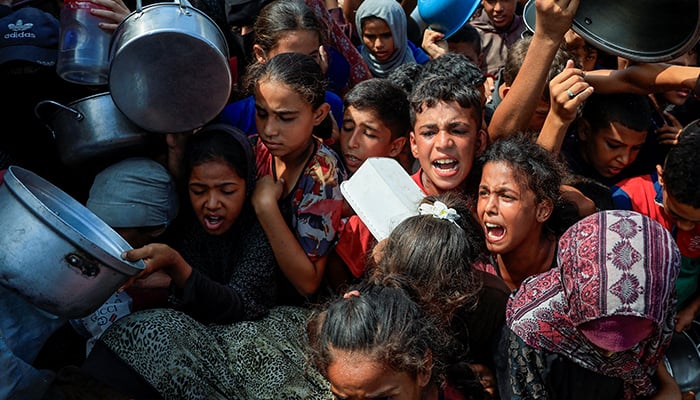Factbox: How the IPC global hunger monitor determines famine
Global hunger monitor determines that famine is taking place in Gaza
August 22, 2025

A global hunger monitor determined on Friday that famine is taking place in Gaza, nearly two years after Israel launched a military campaign in the tiny Palestinian territory in response to the Hamas attack of October 7, 2023.
Here is an explanation of what the monitor is, how it assesses a hunger crisis, when it identifies famine and how it collects data.
Who is confirming famine?
The Integrated Food Security Phase Classification (IPC) is an independent body funded by Western countries and widely recognised as the main global system for measuring the severity of hunger crises.
It was set up to sound the alarm so that famine and mass starvation could be prevented and to help organisations respond.
The IPC is overseen by 19 major humanitarian organisations and regional bodies. It typically partners with national governments to analyse data.
How is famine determined?
The IPC system charts acute food insecurity on a five-phase scale. Its most extreme warning is Phase 5, which has two levels, catastrophe and famine.
If the IPC or one of its partners finds that at least one area is in famine, a famine review committee, led by up to six experts, is activated.
For an area to be classified as in famine, at least 20% of people must be suffering extreme food shortages, with one in three children acutely malnourished and two people out of every 10,000 dying daily from starvation or malnutrition and disease.
The IPC says it does not formally declare famine, but provides analysis for governments and others to do so.
Even if a region has not yet been classified as in famine, the IPC can determine that households there are suffering famine conditions, which it describes as starvation, destitution and death.
The IPC relies on the UN World Food Programme and other relief organisations and government agencies to provide data.
Its preferred method for assessing acute malnutrition levels is to measure children's weight and height, or if conditions do not allow that, to measure the circumference of children's upper arms.
What are the precedents?
This is the fifth time in the past 14 years that a famine has been determined by the IPC, and the first time it has confirmed famine outside Africa.
The IPC previously concluded that there was famine in areas of Somalia in 2011, South Sudan in 2017 and 2020, and Sudan in 2024.
Some have criticised the IPC for being too slow to respond to serious humanitarian catastrophes. In Gaza, it has struggled to access data and Israel has contested its findings.
While a famine classification does not trigger any formal response, it can focus global attention.
What is the current assessment in Gaza?
Of the people affected, some 280,000 are in a northern region covering Gaza City, which the IPC said was in famine. The rest are in Deir al-Balah and Khan Younis — central and southern areas that the IPC projected would be in famine by the end of next month.
The IPC said the analysis released on Friday only covered people living in the Gaza City, Deir al-Balah and Khan Younis areas.
It was unable to classify North Gaza governorate due to access restrictions and a lack of data and it excluded any remaining population in the southern Rafah region.









